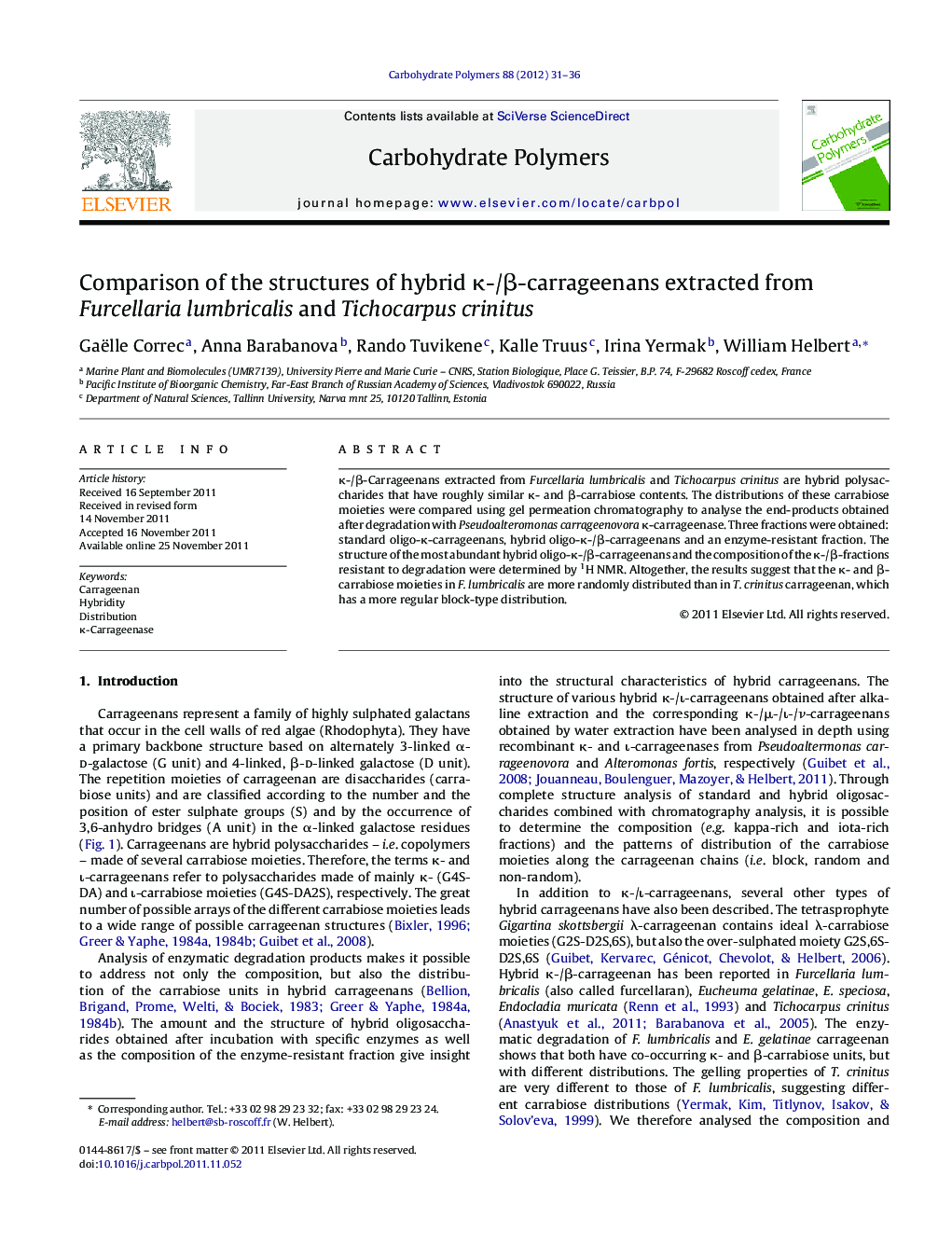| Article ID | Journal | Published Year | Pages | File Type |
|---|---|---|---|---|
| 1384930 | Carbohydrate Polymers | 2012 | 6 Pages |
κ-/β-Carrageenans extracted from Furcellaria lumbricalis and Tichocarpus crinitus are hybrid polysaccharides that have roughly similar κ- and β-carrabiose contents. The distributions of these carrabiose moieties were compared using gel permeation chromatography to analyse the end-products obtained after degradation with Pseudoalteromonas carrageenovora κ-carrageenase. Three fractions were obtained: standard oligo-κ-carrageenans, hybrid oligo-κ-/β-carrageenans and an enzyme-resistant fraction. The structure of the most abundant hybrid oligo-κ-/β-carrageenans and the composition of the κ-/β-fractions resistant to degradation were determined by 1H NMR. Altogether, the results suggest that the κ- and β-carrabiose moieties in F. lumbricalis are more randomly distributed than in T. crinitus carrageenan, which has a more regular block-type distribution.
► We characterised two hybrid κ-/β-carrageenans. ► Fractions obtained after enzymatic degradation are representative of different modalities of distribution. ► For about same composition but different distribution explains different rheological properties.
